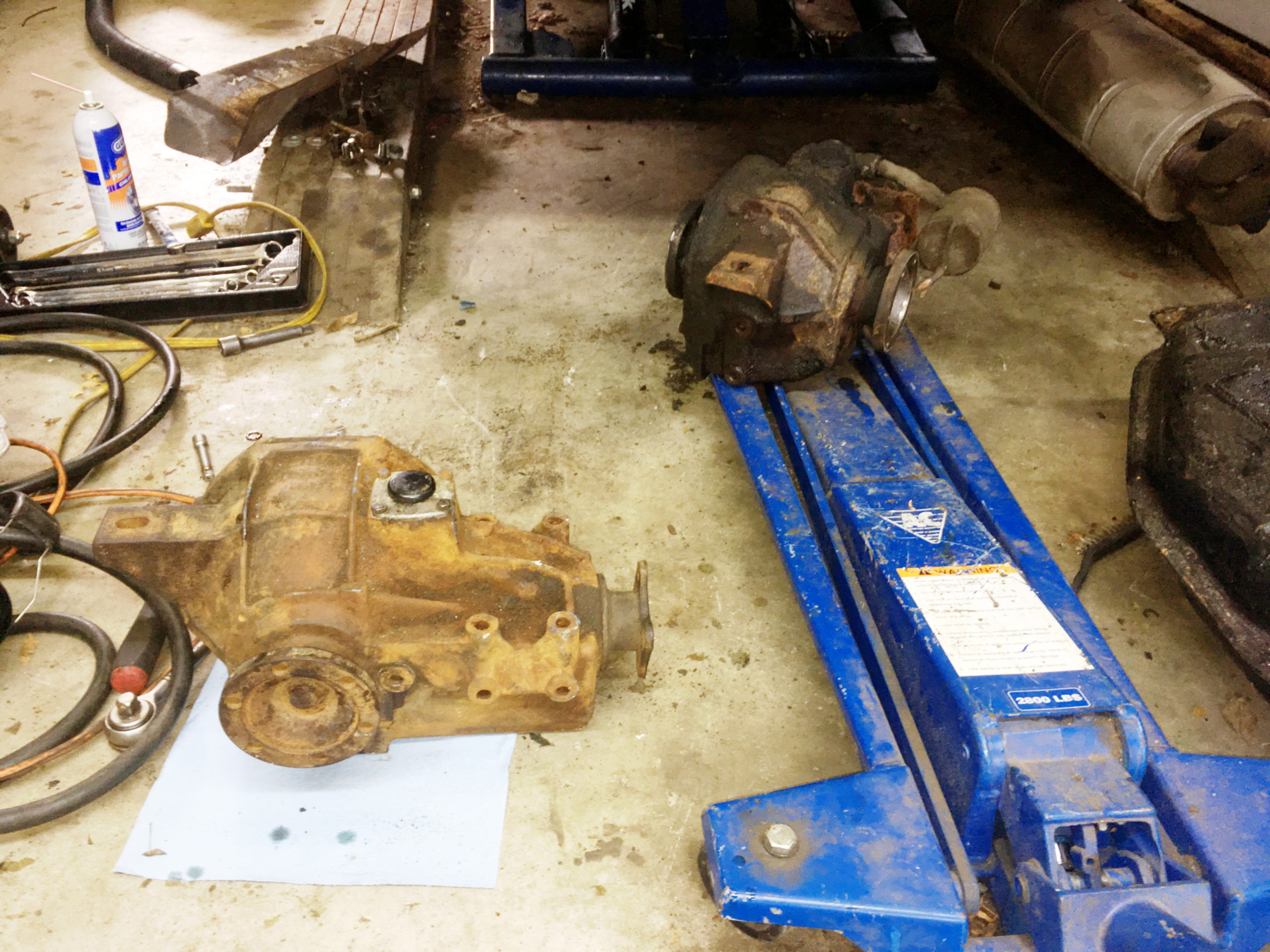One of the questions I get over and over–and not just in the BMW world–is, “My battery is dead. What caused it? And what should I do?”
Hey, at least it’s not “My car won’t start,” in which case I need to immediately triage it to battery-versus-cables-versus-starter-versus-fuel-versus-ignition. Dead battery: right. Got it. Thank you for your clarity.
If you also tell me, “The problem is not corroded battery clamps; I put a voltmeter across the terminals, and it’s down to nine volts,” you get mad extra credit. Introduce yourself at the next event and we can buy each other a beer.
There are four common reasons why people come out in the morning to find that their battery is discharged to the point where it won’t start the car:
- You left something on in the car. My wife’s Honda Fit has a battery about the size of a small box of Kleenex. It’s got very little reserve capacity. Leaving the dome light on overnight is enough to discharge it. Did you do something like this? Admit it; you did it. Slap yourself. Don’t do it again.
- Age. Batteries do die, and sometimes do so with very little warning, particularly in winter. There’s a date code printed on or punched into the label. If the battery is five years old or more, or if it looks like hell and the terminals are corroded, the odds are pretty good that the battery itself is the reason that you turn the key and the engine cranks slowly or not at all.
- The charging system isn’t charging the battery. If that’s the case, and you made it home last night, but the car wouldn’t start in the morning, basically you were fortunate. It won’t start now because it takes less juice to keep a car running than to start it.
- The car’s electrical system has a parasitic drain. On an E39/E46 or later car, it might be a big drain from a failed Final Stage Unit (FSU), also called “the sword.” It’s a resistor pack with a big heat sink on it that lives up under the dash and controls the fan speed. If it goes bad, it can drain a battery between the time you park the car at work in the morning and when you leave to go home. The rechargeable flashlights in the glovebox of E28s are also famous for draining batteries. Or it might be a small drain—not enough to drain the battery overnight, but leave it for a week and you ain’t goin’ nowhere.
So: How do you know which is the cause of your problem? There are three tests that you can perform. I recommend this order, but you may have reason to do otherwise.
Battery Test
Not to sound like the Sphynx in Mystery Men, but to test a battery, you really need a battery tester. Yeah, you can take the battery to AutoZone or some other auto-parts store where they say they’ll test it for free, but they want to sell you a battery, so I never know how much to trust their results. A “battery tester” used to mean a carbon-pile tester or other load-testing device that put a huge electrical load on the battery and measured how much current it put out and how quickly the voltage dropped. However, these days there are small resistance-based battery testers that give you a health reading without draining the battery.
I bought this Cen-Tech digital battery analyzer at Harbor Freight years ago. I’m sure that there are other similar devices out there now, but I still love it. Its manual talks a lot about its ability to measure battery capacity (how much of the battery’s cold-cranking-amp rating it still has), but really, its utility is in its resistance reading. Clamp it across the battery terminals, and it gives you a resistance reading in milliohms: Five or less and the battery is in excellent health. Over ten and it’s no good. Between five and ten is a gray zone.

This battery from a car that had been sitting for months was good, even though its voltage at test time was a little low.
The catch, as with any battery tester, is that you can’t use it on a dead battery, so first you need to charge the battery, and for that you need a decent three-stage battery charger (preferably a three-stage temperature-controlled battery charger), not a trickle charger or a maintainer. Those are not to recharge dead batteries; they’re to maintain fully charged batteries.
Note that the charger itself may tell you that your attempt to charge the battery has failed, in which case you don’t really need the tester. In fact, if the battery really is bad, and the charger doesn’t flag it, it is usually pretty obvious, because the battery probably won’t hold the charge; the car will likely either not crank and start, or do it once or twice, then exhibit the same problem again.
Charging-System Health Test
I know that I say this over and over, but one of the most valuable things you can learn about your car’s electrical system is that at rest, the battery voltage should be 12.6 volts, and while the engine is running and the charging system (the alternator, regulator, and related wires) are charging the battery, the voltage should rise by about a volt to a volt and a half, giving you a reading of about 13.5 to about 14.2 volts. On a vintage car, it may never reach 13.5, and on a newer car, it may exceed 14.2 volts, but the point is that it isn’t still sitting at 12.6 volts. If the voltage rises when the engine is running, then your charging system is functioning. But if it doesn’t–if the voltage at the battery with the engine running is still the same 12.6 volts that it is with the engine off–the charging system is not charging the battery, the battery is discharging, and the car will die.
I talked about this at length a few weeks ago when the alternator in my E39 died (actually, it was the voltage regulator inside the alternator). You can do this test either with a multimeter set to measure voltage by putting the probes across the battery terminals, or you can buy one of those $8 cigarette-lighter voltmeters. They’re not as accurate as the multimeter, but they’re accurate enough for you to see if the voltage rises as it should when the engine’s running, or stays the same.
The point is that if your charging system isn’t charging the battery, replacing the battery will get you a car that starts and drives, but it’ll just die again when the new battery runs down.

Yes, I’ve posted this before, but if you don’t see about 13.5 to about 14.2 volts with the engine running and instead see 12.6, the battery isn’t being charged. 13.4 volts is certainly close enough for Hack Mechanic work.
Note that vintage cars are very forgiving of dead batteries. That is, if you ran your battery down because you left the parking lights on overnight, you can generally jump-start the car, drive off, and if the charging system is working properly, it’ll recharge the battery while you’re driving. This is, however, not the case with modern (post-1996 OBD-II) cars with multiple control modules. The cars will often flip out and do bizarre things if the control modules don’t see the correct voltage levels. Thus, with a non-vintage car, it’s really imperative that you have a battery that has tested good and is fully charged before you do the charging-system health test.
Parasitic Drain Test
If your battery has tested good, and the car passes the charging test with flying colors, and the battery is still dead in the morning or after a few days, the odds are strong that you have a parasitic drain–something that is causing the battery to run down while the car is sitting. The thing to do is quantify it, and to do that, you need a multimeter that’s capable of measuring DC amperage (current).
- Make sure everything in the car is shut off and the keys are out of the ignition.
- Configure the multimeter for the amperage measurement. Typically this means taking the positive (red) probe out of the socket you use to measure voltage and putting it into the socket used to measure amperage. Both the socket and the meter setting are usually labeled with a capital “A” and may say “10A” (ten amps). There also may be milliamp and microamp settings, but try the 10-amp setting first.
- Disconnect the negative battery cable.
- It’s really best if you have meter probes with alligator clips on them so they can hold themselves in place, but if you don’t have them, hold the red multimeter probe against the end of the negative battery cable and the black probe against the negative battery terminal. If you have them reversed, don’t panic; the meter should just read negative amperage.
- While the meter is taking the amperage measurement, do not turn anything on. ABOVE ALL, DO NOT TRY TO START THE CAR, because all that current will try to flow through the meter.
- Read the meter. The reading tells you how many amps of current are flowing with everything shut off. Depending on the multimeter, it may tell you the measurement in amps, in which case, if it’s a small value, it’ll be a decimal (0.01 is a hundredth of an amp, which is ten milliamps), or it may auto-scale and tell you the reading in milliamps, so if it says “10 mA,” that’s ten milliamps.
- What does the reading mean? How bad is the drain? Here’s a rough guide.
- Ideally, with nothing on, you’ll see less than 10 milliamps (< 0.010 amps).
- Less than 50 milliamps (<0.050 amps) is generally considered an acceptable drain, but left for days, it’s still a fair amount.
- Drains in the tenths of an amp (0.1 to 0.9 amps) are pretty significant.
- Drains above an amp are quite large, indicating that some high-amperage device like an electric motor or a heater or a headlight is on.

Measuring the drain in my M coupe: This is showing 0.09 amps (90 milliamps). That’s a lot, but this is just for demonstration. The back hatch is open, and the car isn’t even close to going to sleep.
How you handle finding a drain depends heavily on the era of the car. The classic method for finding the source of a drain is to pull fuses one at a time and watch what effect it has on the current. This works well on a vintage car with a small number of fuses. If pulling a fuse makes the reading drop to near zero, you can then look to see what systems are on that fuse and examine those systems. However, it’s not terribly effective on modern cars with dozens of fuses.
In addition, post-OBD-II cars with multiple control modules typically have sleep cycles. That is, once the car is locked, in some amount of time the control modules should go to sleep, at which point they draw less amperage. Depending on the car and the module, it may take fifteen to 45 minutes for the modules to go to sleep. If the current draw remains high, it could be that a module isn’t going to sleep, which in turn could be because a door switch is malfunctioning. These are challenging problems to solve, because the hood or the trunk (wherever the battery is) needs to be open for you to take the amperage measurement, and there’s typically a sensor or a switch indicating that it’s open, so you’d need to defeat the switch in order to conduct the test.
That’s pretty much it. Either you left something on, or the battery itself is no longer any good, or the charging system isn’t charging it, or something you’re unaware of in the car’s electrical system is dragging it down. With these three tests, it should be pretty easy to figure out which one it is.
Just don’t email me saying “My car won’t start” without further clarification. Do that, and no beer for you.—Rob Siegel
Rob’s new book, The Best of The Hack Mechanic, is available here on Amazon, as are his seven other books. Signed copies can be ordered directly from Rob here.





















